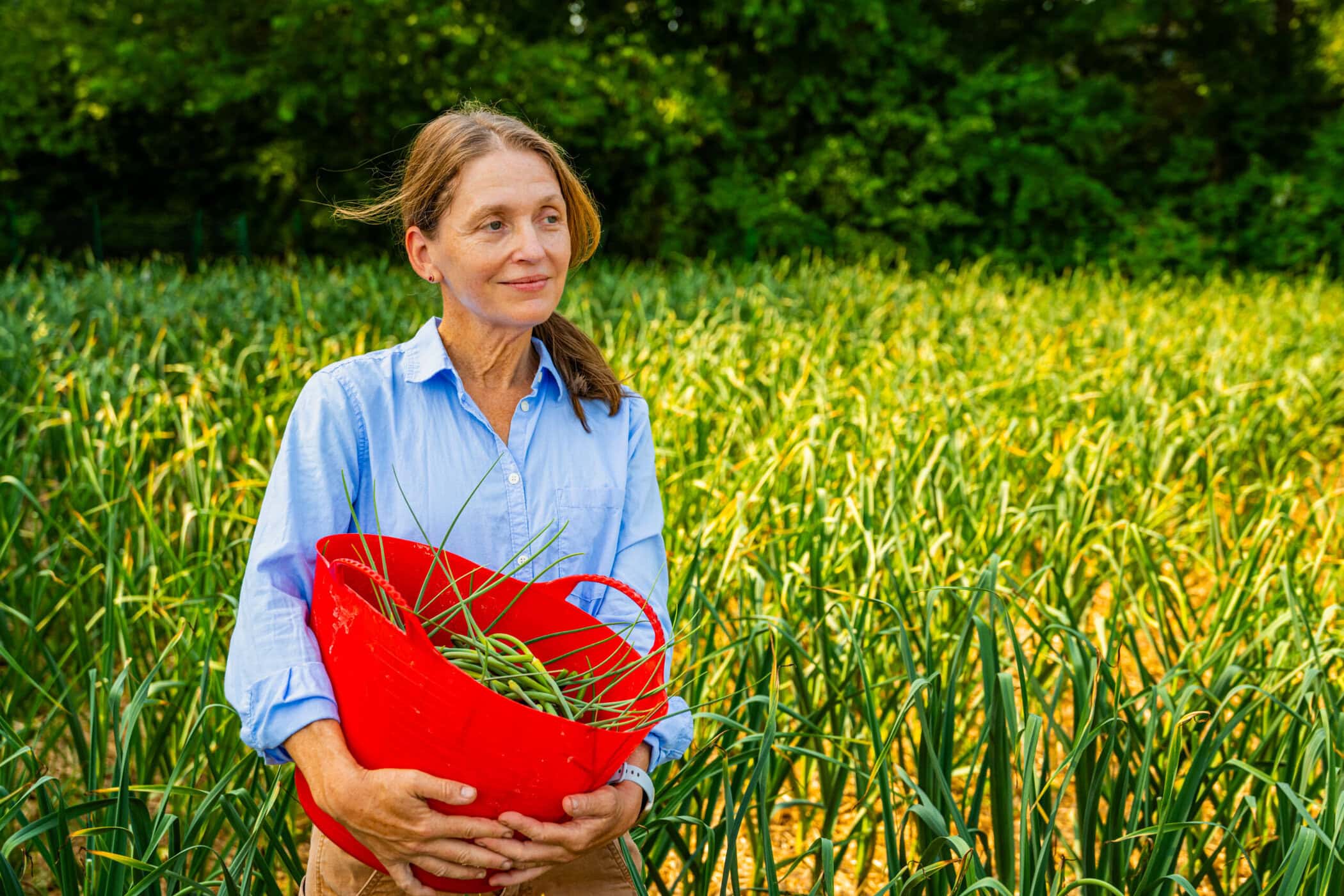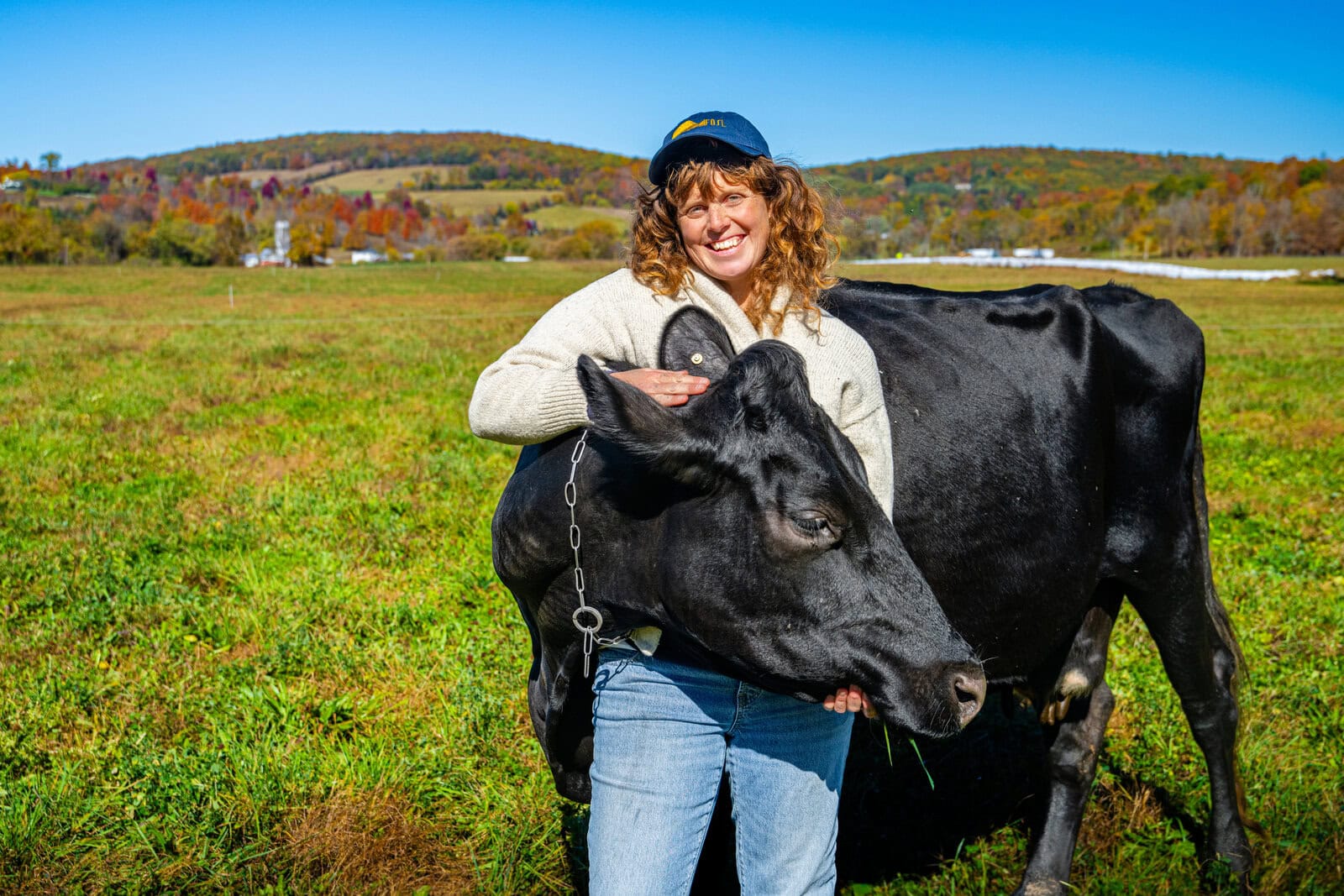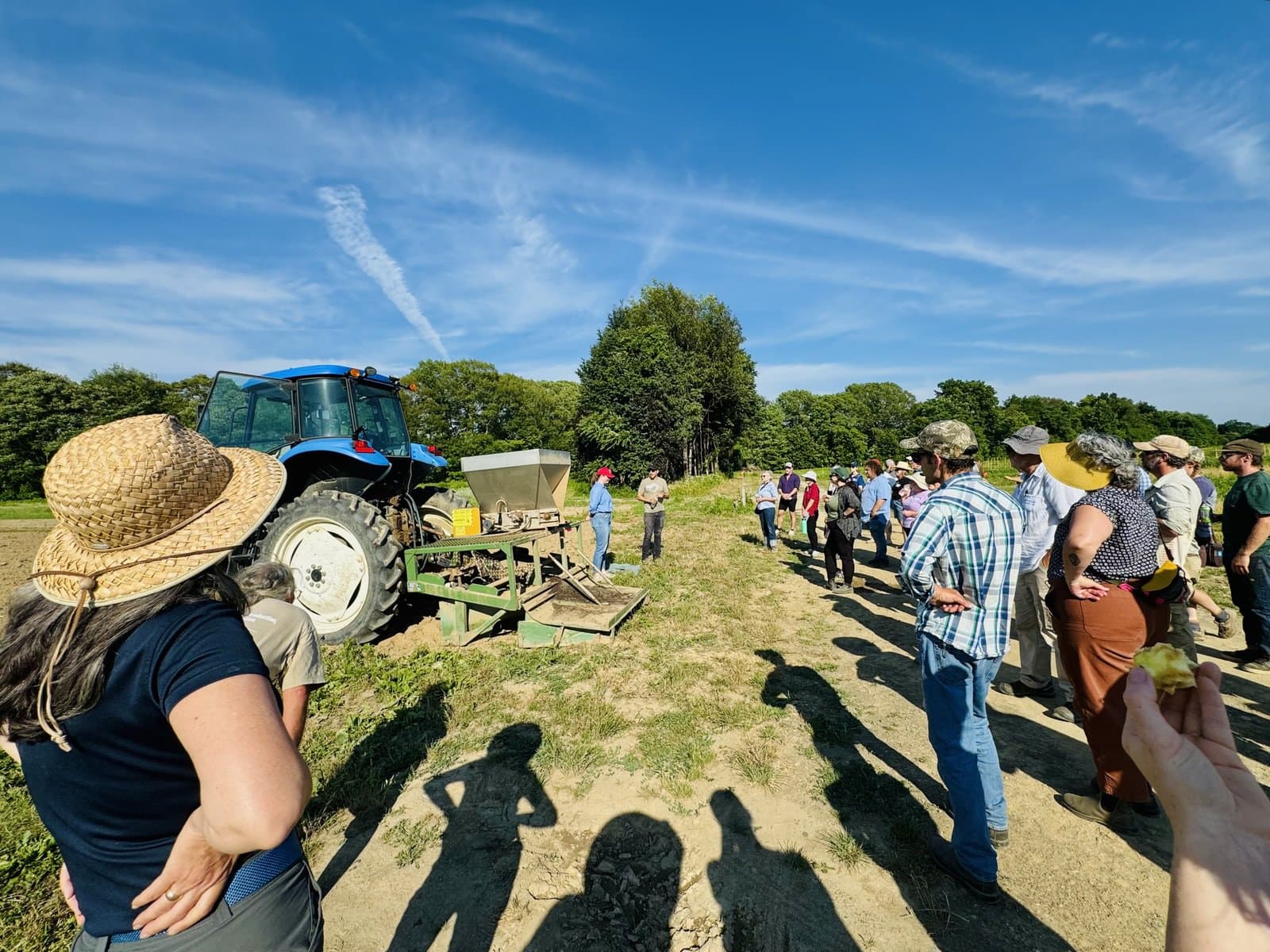A confluence of rivers is often a place of ecological diversity, thriving agriculture, and cultural exchange. So it’s fitting that a transformation is underway here, where the Catskill and Kaaterskill creeks come together — land called “Ma-wich-nack,” a word whose meaning was set in colonial records as “place where two streams meet” or possibly “place of assembly.”
This place is Scenic Hudson’s Mawignack Preserve in Catskill, and it will not be the first time this patch of natural splendor near the Hudson River has been transformed. What was once a fertile plain settled by Lenape peoples — who long tended the land until they were displaced by European colonization — was then turned into farmland by Dutch settlers. In the 19th century, it was a place Thomas Cole, founder of the Hudson River School of landscape painting, called “one of the gems of the earth.”
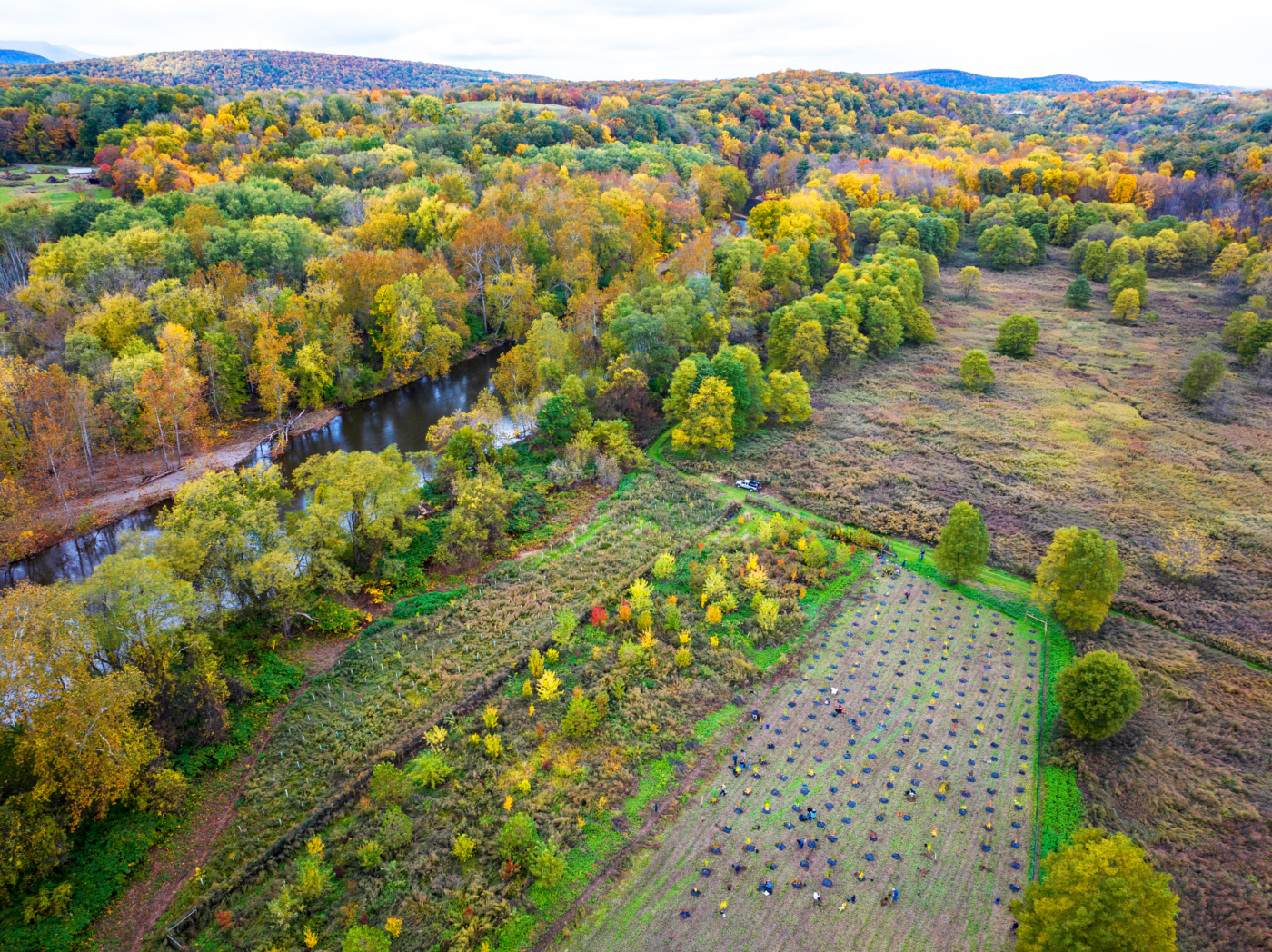
Once farming ended in the 1990s, the land changed once again, as abandoned fields were overrun by an opportunistic plant species — oftentimes the result of replacing ancestral land care practices with non-traditional agricultural methods. Now acres upon acres of shoulder-high mugwort twist in the wind, covering a large swath of the preserve in a blanket of leafy stems and self-regenerating rhizomes.
“The black locust tree has been able to hold its own,” Dan Smith, Scenic Hudson’s natural resources manager, says while pointing to a small number of trees standing fast amid the waves of mugwort. “But not much else has been able to grow.”
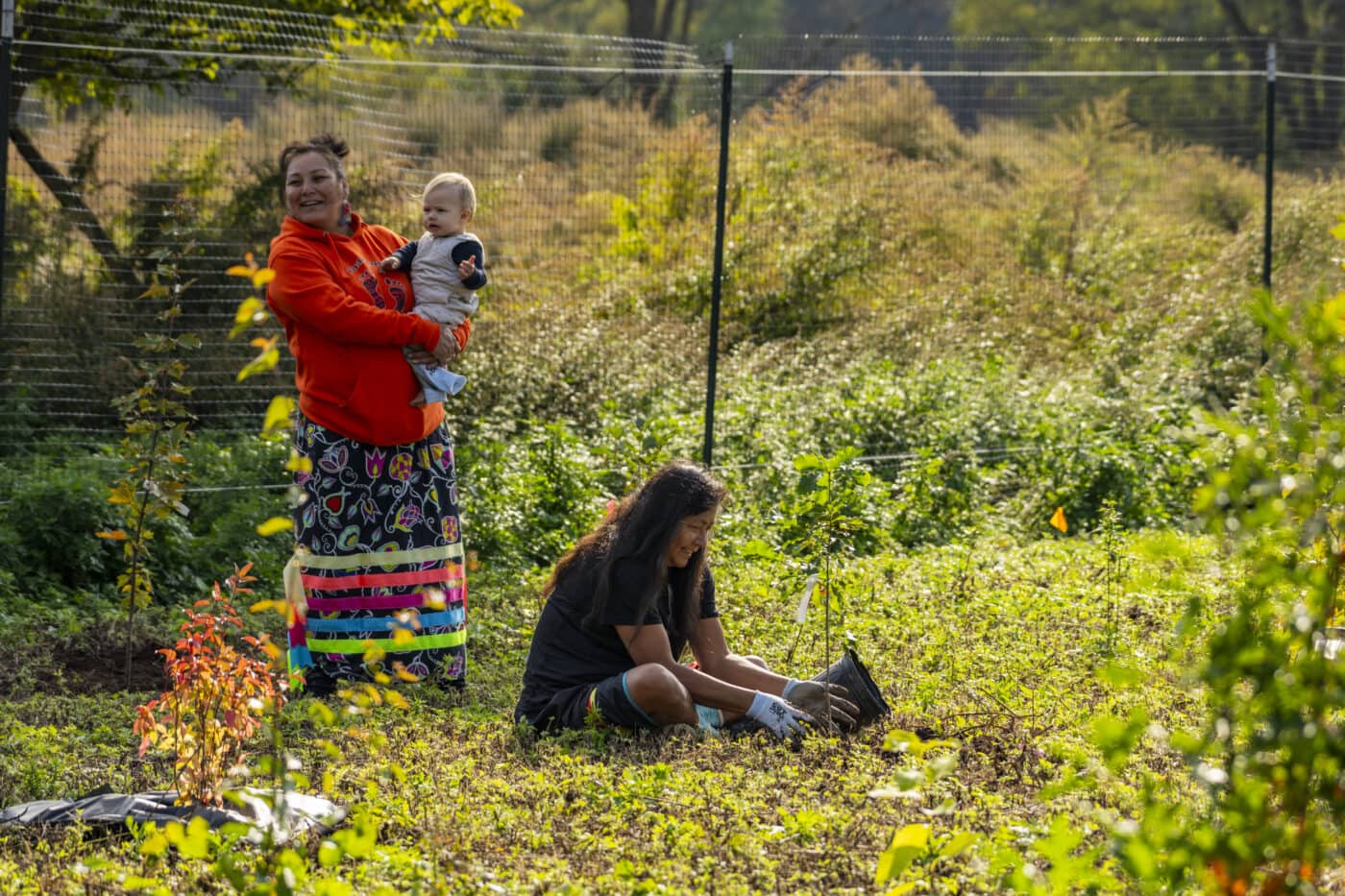
That is changing. Scenic Hudson, in partnership with the Greene Land Trust and Partners for Climate Action Hudson Valley, is in the midst of a long-term project to replace some 40 acres of mugwort with a range of native tree species.
The process is straightforward. A team of staff and volunteers have been mowing down the mugwort, planting more than a dozen species — including sycamore, tulip poplar, pin oak, and dogwood — and building deer fences to protect the young trees. In October, members of Mohican and Lenape families revisiting their ancestral homelands joined in planting trees, their presence a powerful symbol of restoring what was once naturally here.
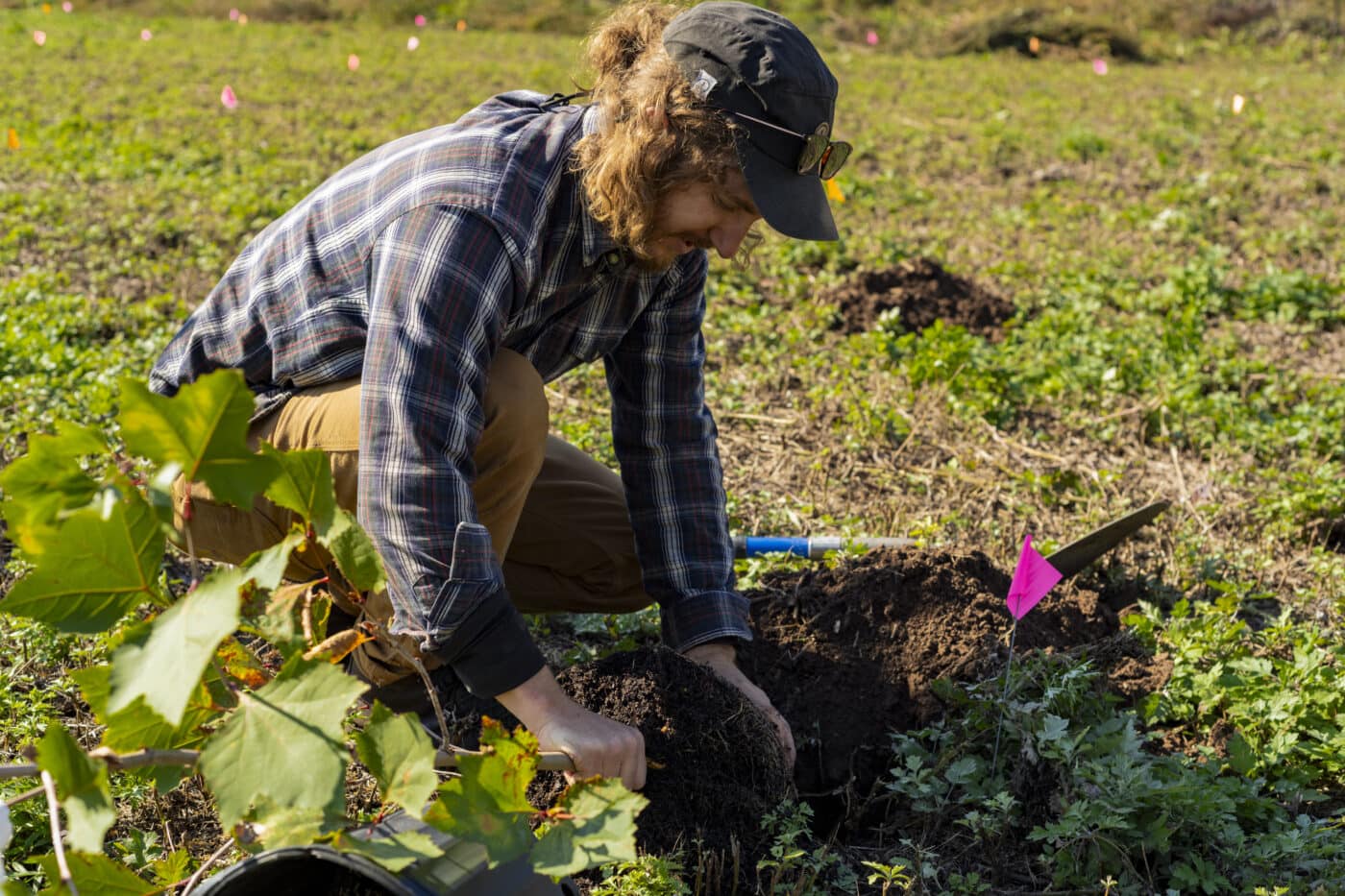
This year, more than 600 saplings were scheduled to be planted, doubling the number from previous years. The trees and fencing were acquired through a $20,000 Ecological Restoration Grant from Partners for Climate Action Hudson Valley, along with a brush mower to provide sustainable long-term maintenance of the plantings.
Work on the project began in 2019, when members of the Hudson Valley Corps of the Student Conservation Association helped build a deer fence and planted 150 maples, dogwood, witch-hazel, and other tree varieties. In 2020, work focused on planting elms, which had been ravaged by Dutch elm disease. In 2021 and 2022, trees from the state Department of Environmental Conservation’s Trees for Tribs (short for tributaries) program were planted. The DEC program provides seedlings that, when planted along streamside buffers, decrease erosion, reduce flooding damage, provide wildlife and stream habitat, and protect water quality.
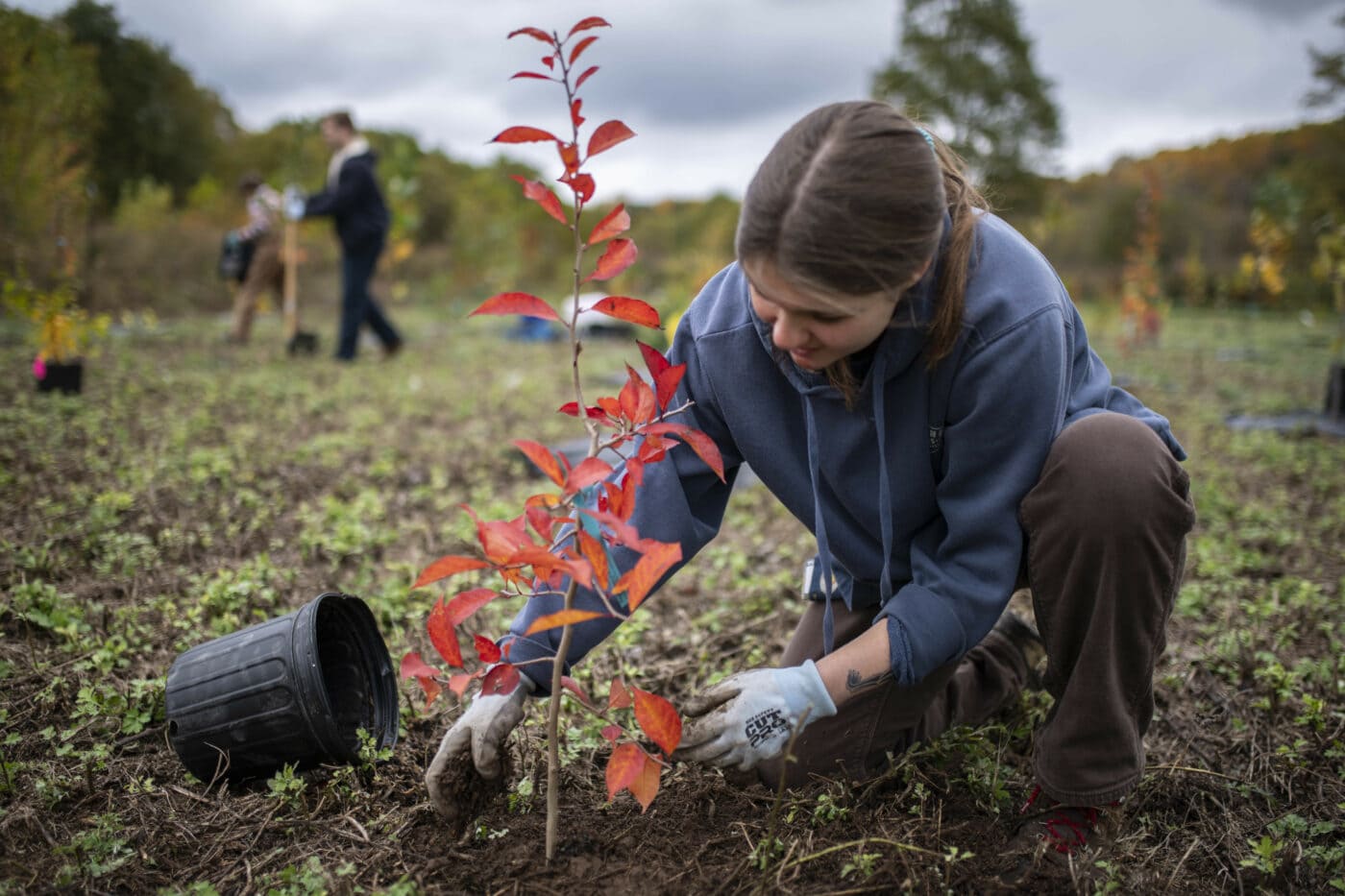
Wide spaces are left open between the plantings to allow for future mowing of mugwort that is sure to sprout again until the trees become established and start providing shade. After the native trees shade out the mugwort, efforts will focus on planting native species that thrive in the understory, the area below the tree canopy.
“We are trying to help get the land to a different state,” says Pia Ruisi-Besares, director of science, climate and stewardship at Scenic Hudson. “Once it has a little more structure, it will be able to sustain itself. But for the first three to five years, we really need to help it along because we as humans have changed the landscape so much.”
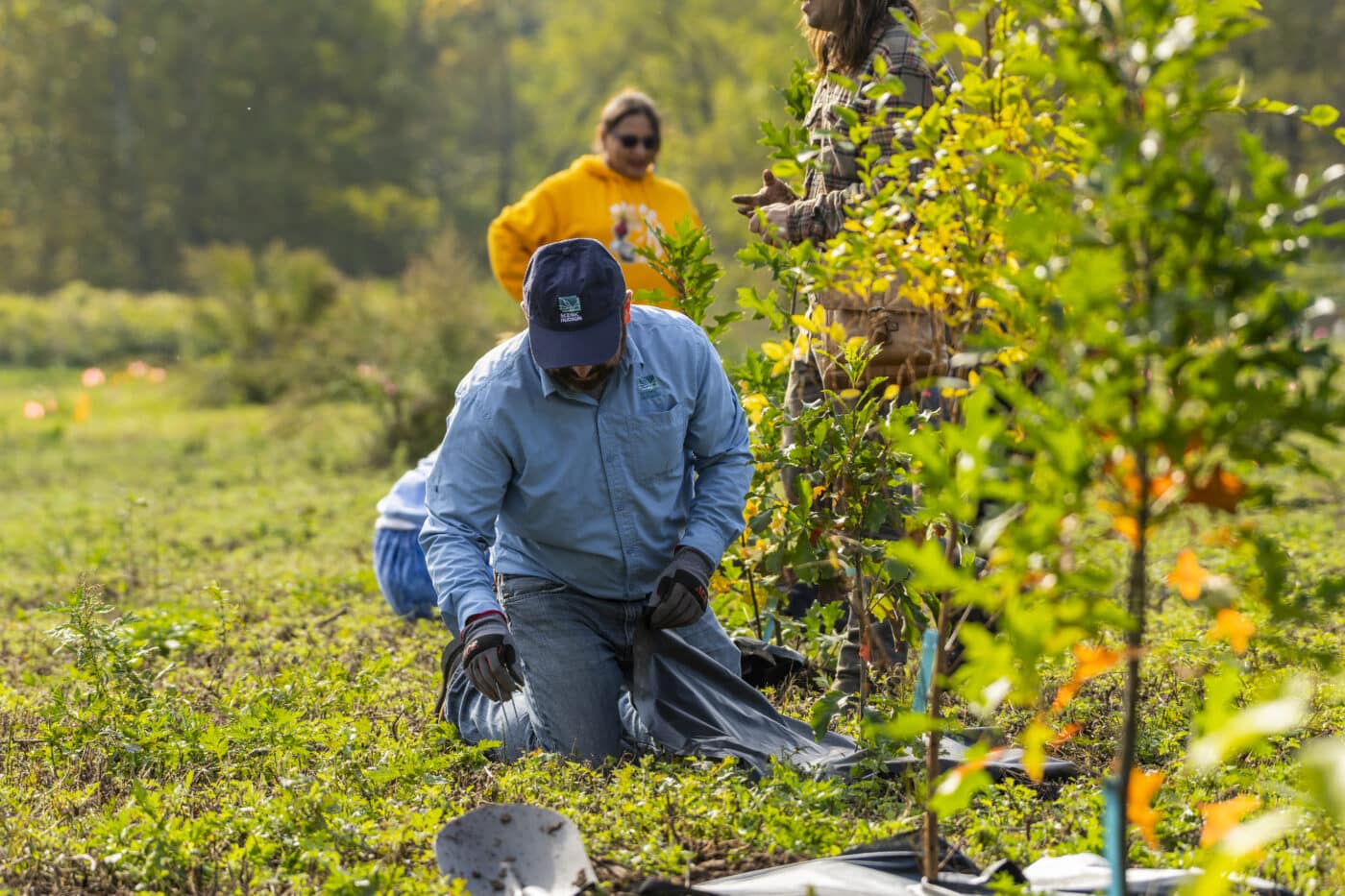
Indeed, the work is a textbook example of focused restoration and sustained ecological management. Lack of maintenance, Ruisi-Besares says, “is the number one reason why these projects fail sometimes.”
The goal is to link the restored areas to rare floodplain forests that line the Catskill Creek, which runs through the preserve before emptying into the Hudson.
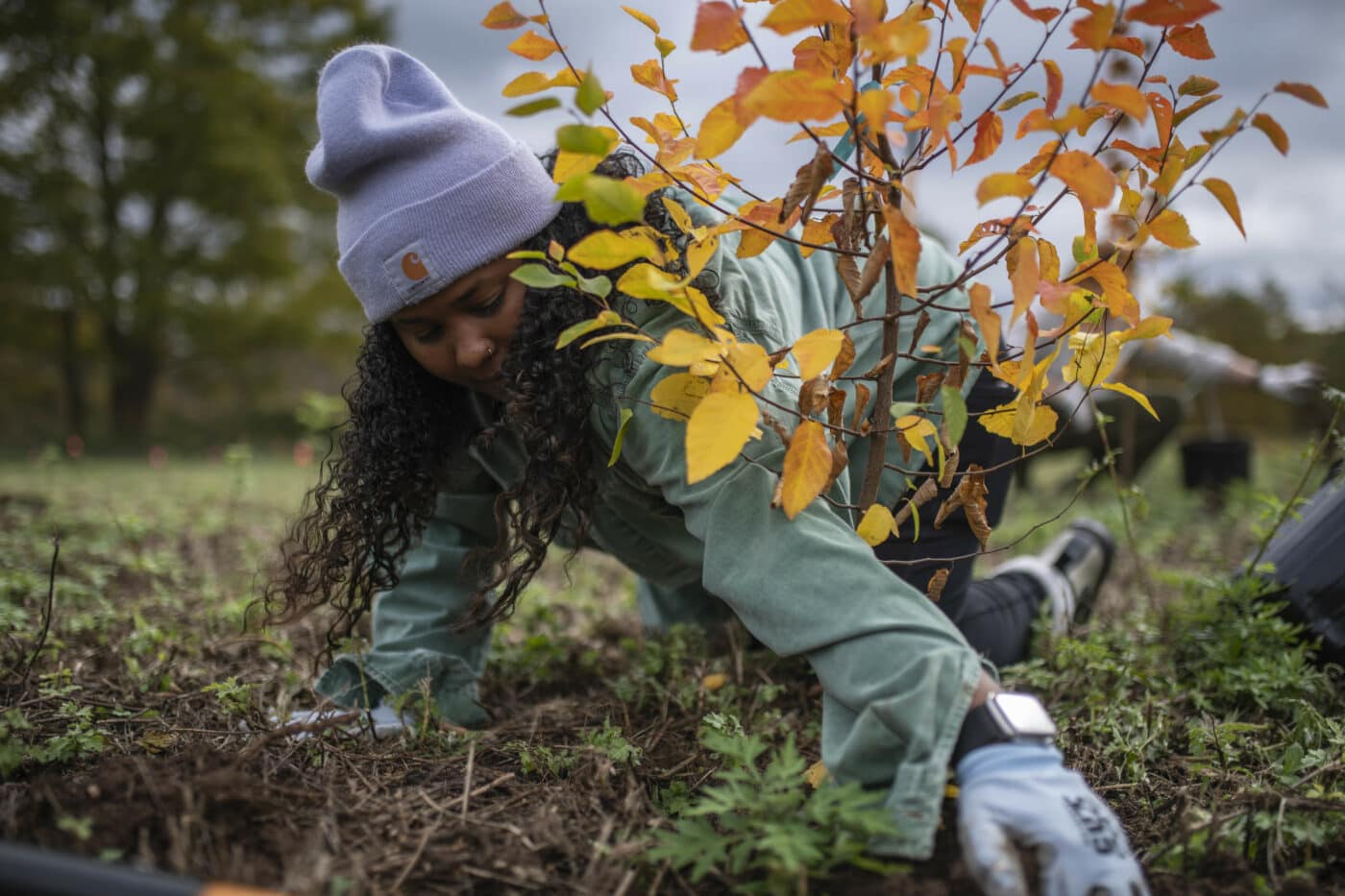
Restoration of the forest will not only provide biodiverse habitat for a wide range of wildlife and understory plant species, it will also serve as an added bulwark against flooding.
Along with replacing mugwort, restoration efforts face other challenges, like reducing the amount of invasive knotweed along Catskill Creek’s shore. “Mugwort is really shallow-rooted and doesn’t do much to hold the bank and the soil,” Ruisi-Besares says. “So we want that flood-retention ability.”
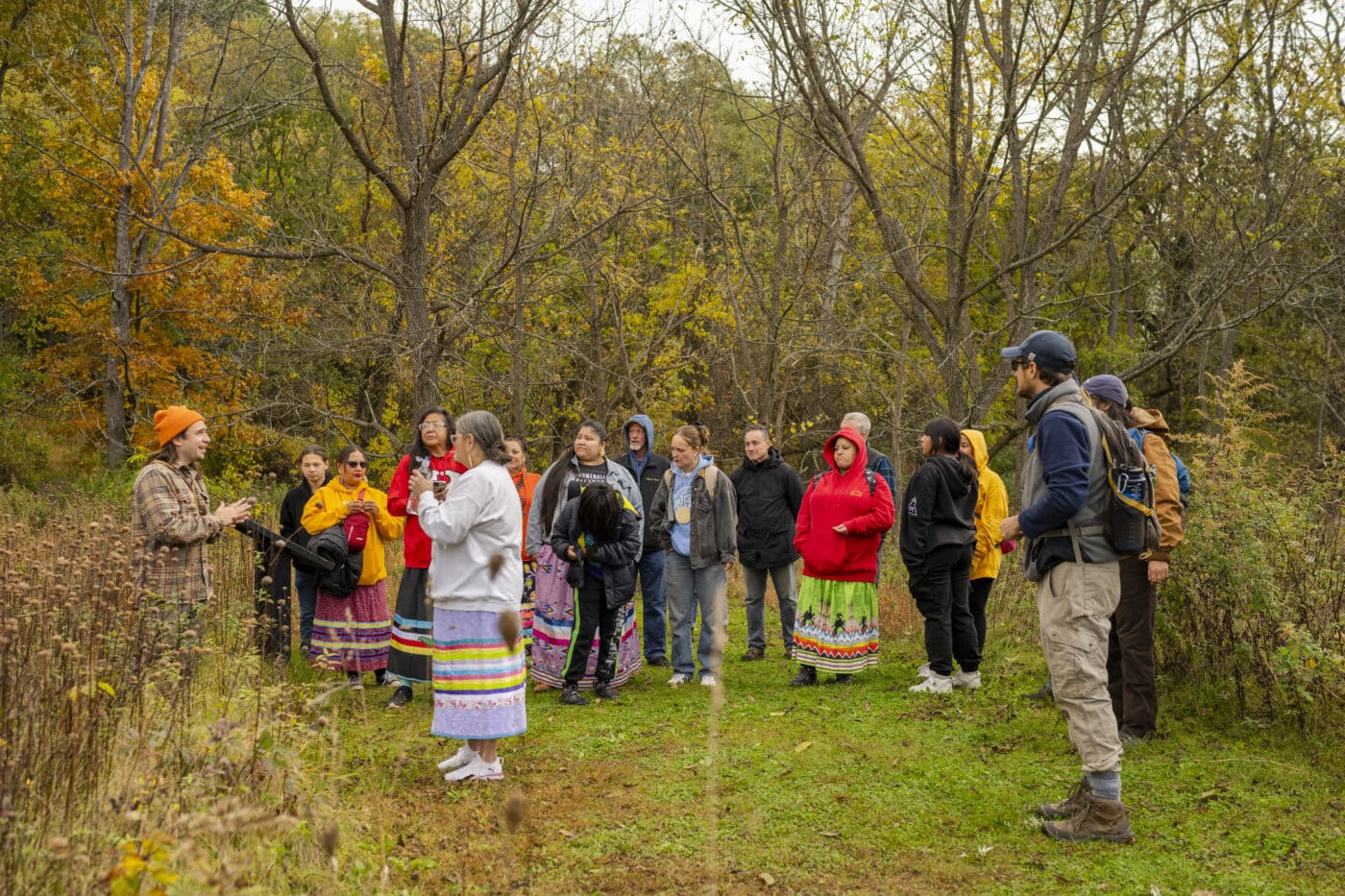
And with reason. The area is just upstream from the Village of Catskill, which was inundated by floodwaters caused by Hurricane Irene in 2011. Climate change, no doubt, will bring more.
“It’s been rewarding for us to be able to work with Scenic Hudson on this project,” says Bob Knighton, president of the Greene Land Trust. “Part of the value of the preserve is that it provides some flood attenuation downstream, and replanting the forest will help with that. It’s a multi-year project, and we are seeing significant progress.”
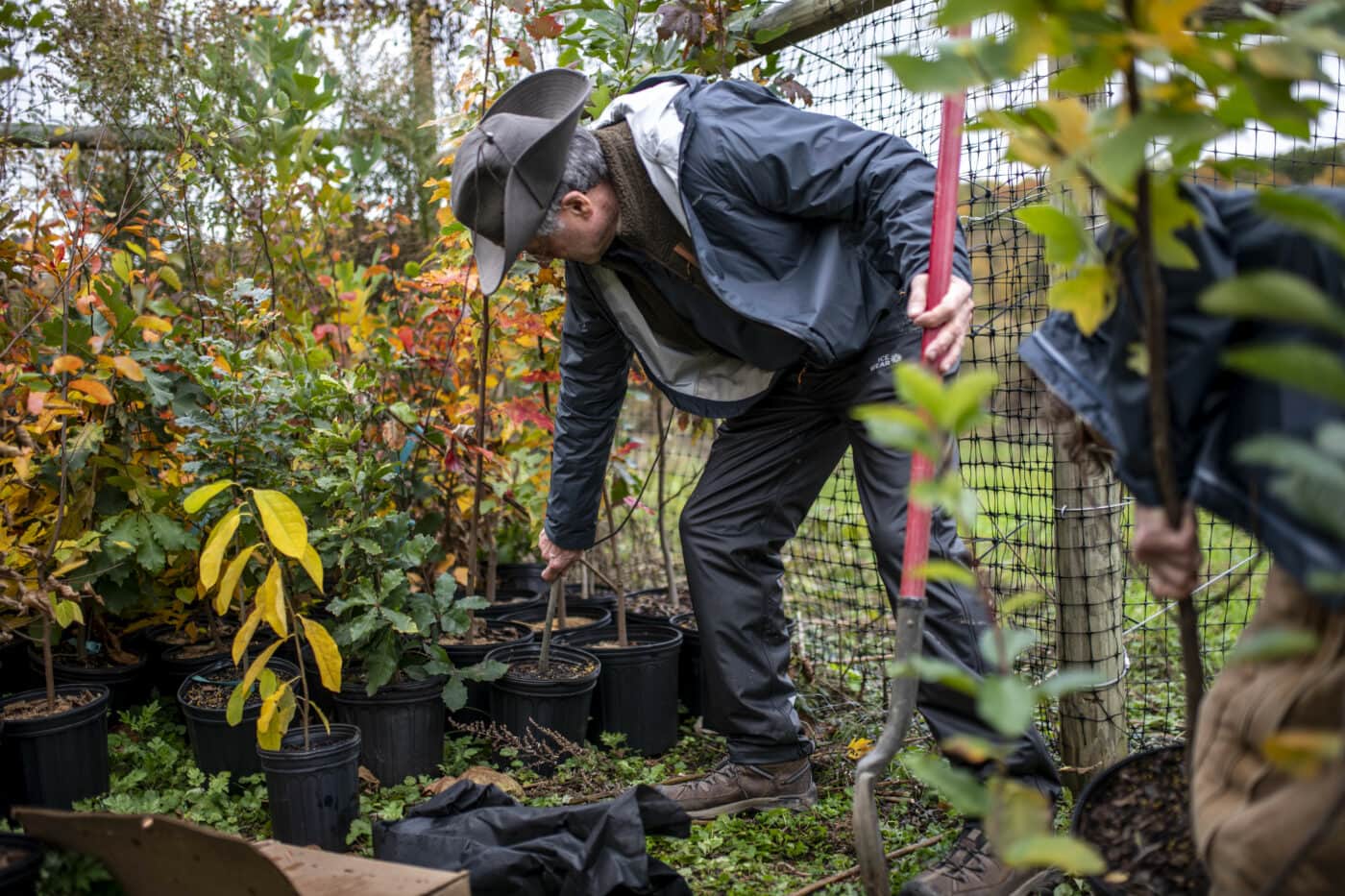
On a recent autumn Sunday, Jane Snyder of the Greene County hamlet of Climax was wielding a shovel with a sense of purpose that seemed reminiscent of the farm work that shaped the land for centuries.
As it happens, Snyder is a descendent of the Van Vechten family that purchased the land from European settlers in 1681 and farmed it for numerous generations. Planting the trees, Snyder says, made her feel “connected” to the land and its long and evolving history.
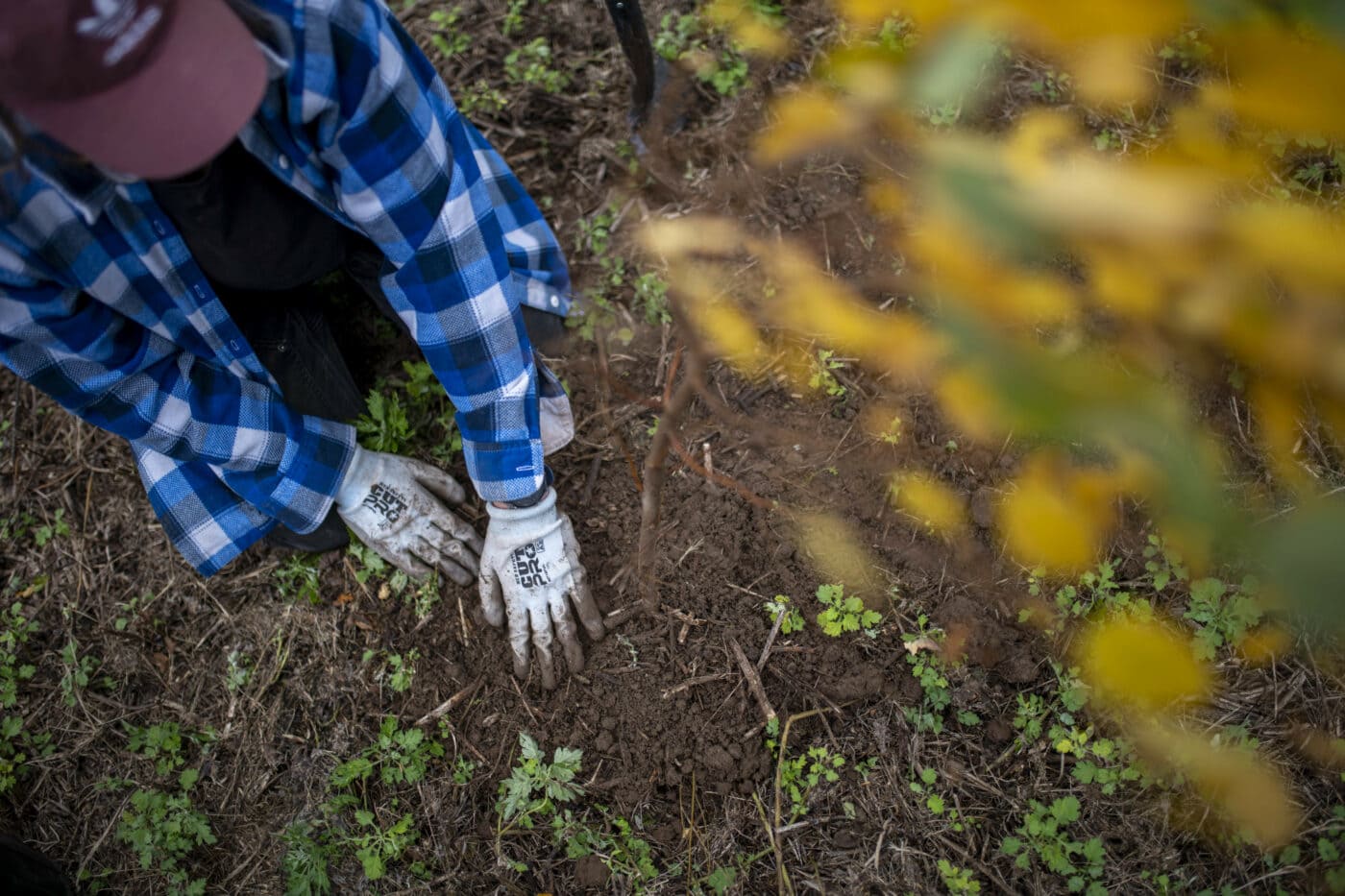
That history includes the development of the Hudson River School. Cole, the founding master, not only created paintings of the landscape, he wrote and spoke about it frequently. Speaking at the Catskill Lyceum on an early spring day in 1841, he lamented the human-caused changes to the site, including the removal of “that noble grove [near] Van Vechten’s mill.”
“But I will conclude,” Cole said to his audience, “and in the hope that, though feebly urged, the importance of cultivating a taste for scenery will not be forgotten. Nature has spread for us a rich and delightful banquet. Shall we turn away from it?”
There was no way for him to know that more than 180 years later, the answer would be: Not today.




